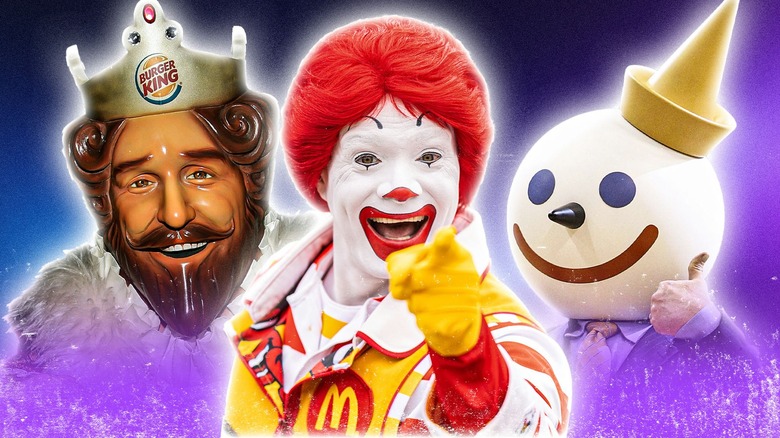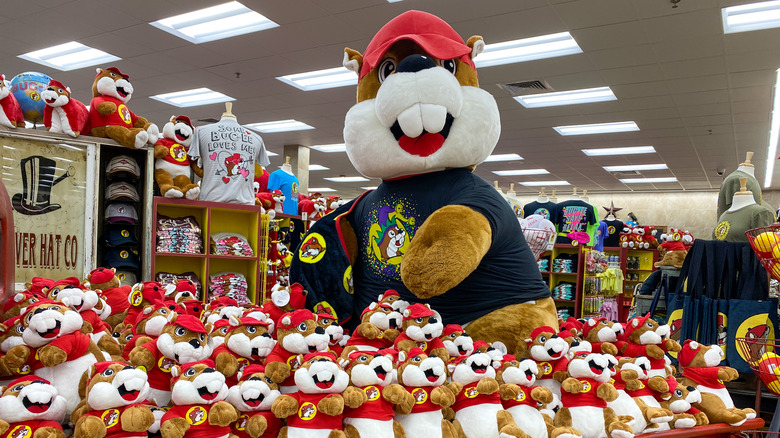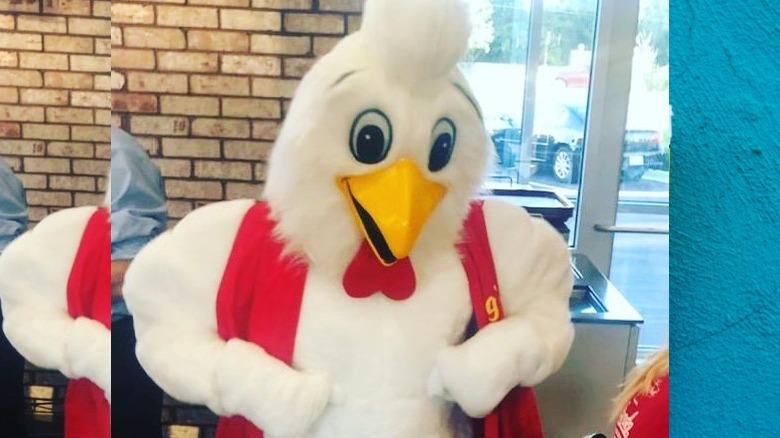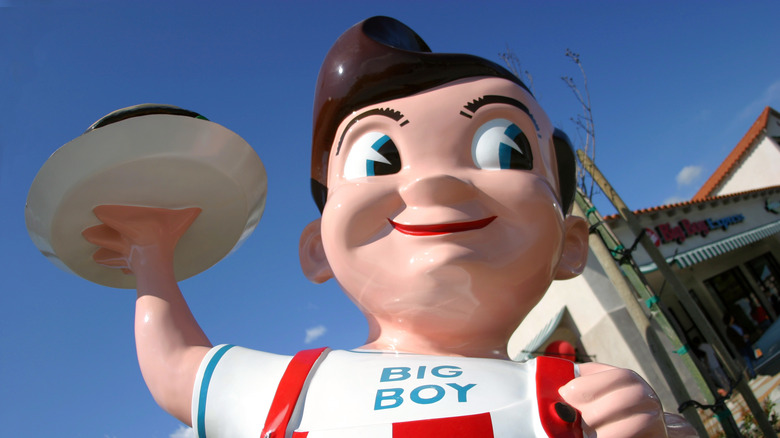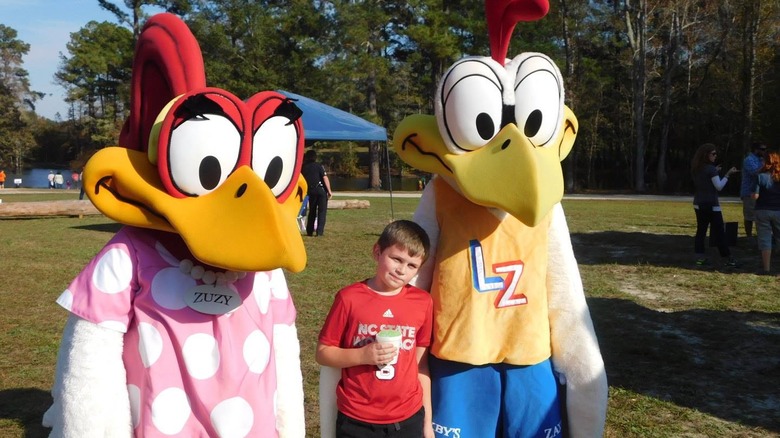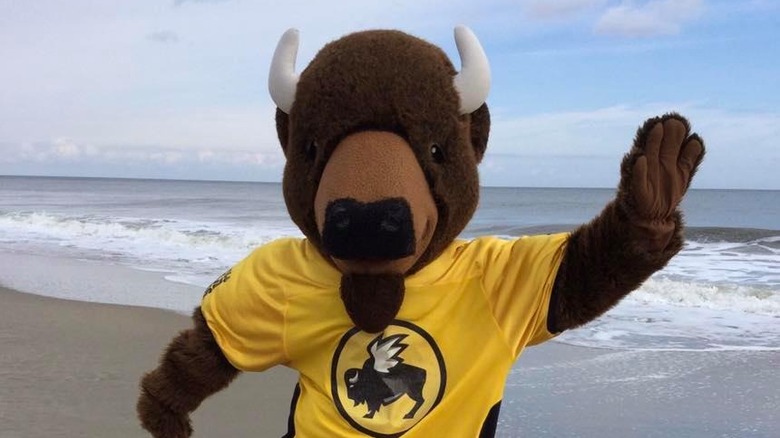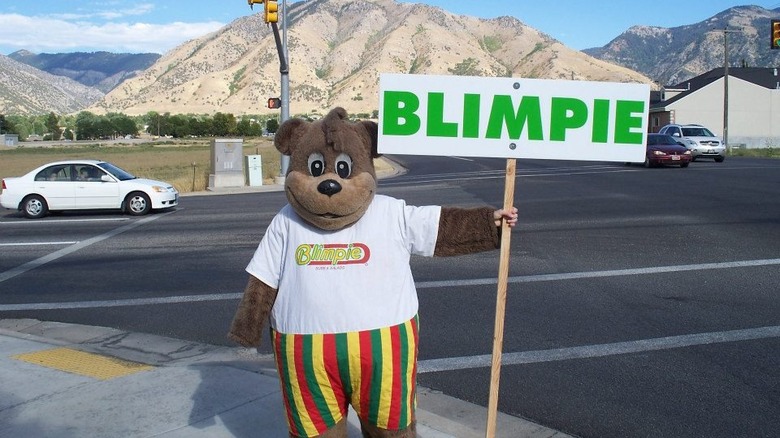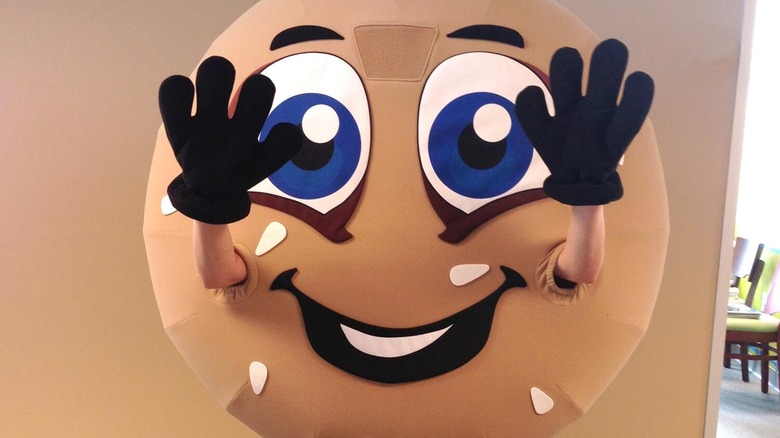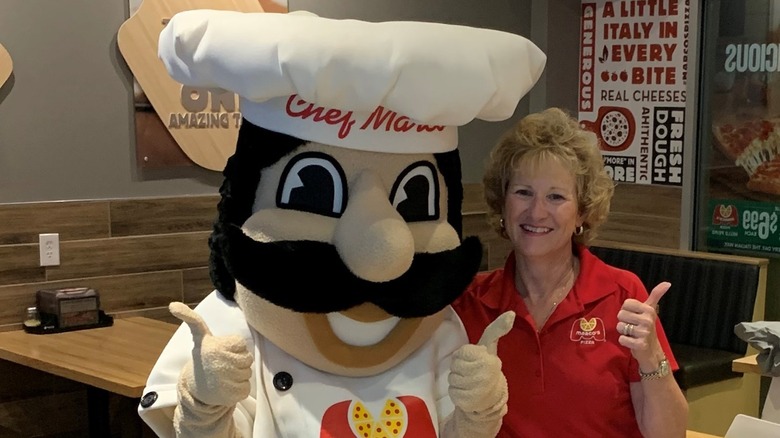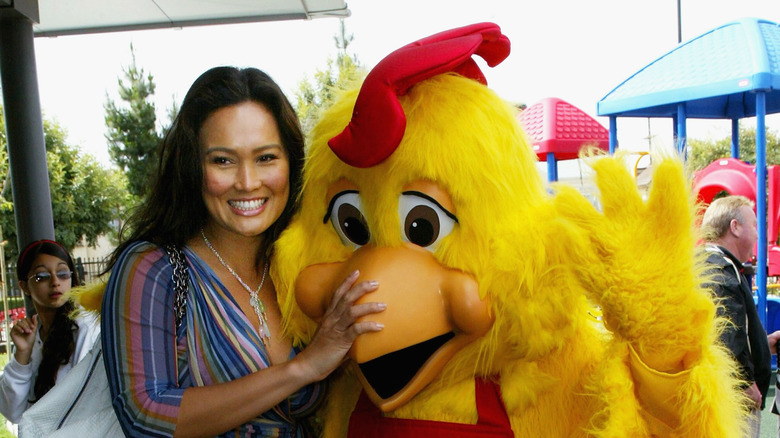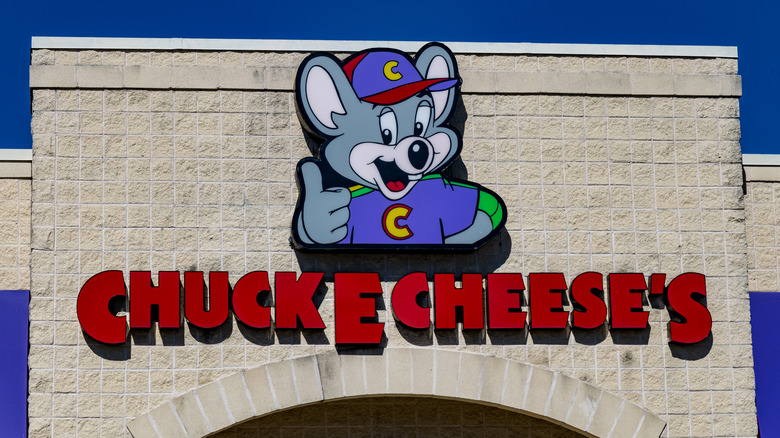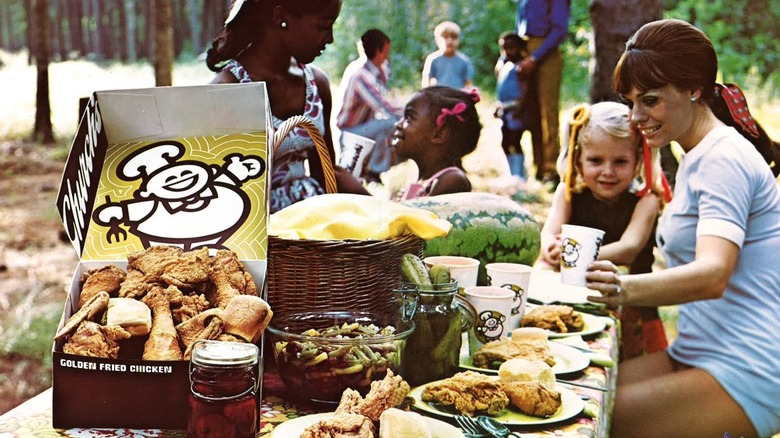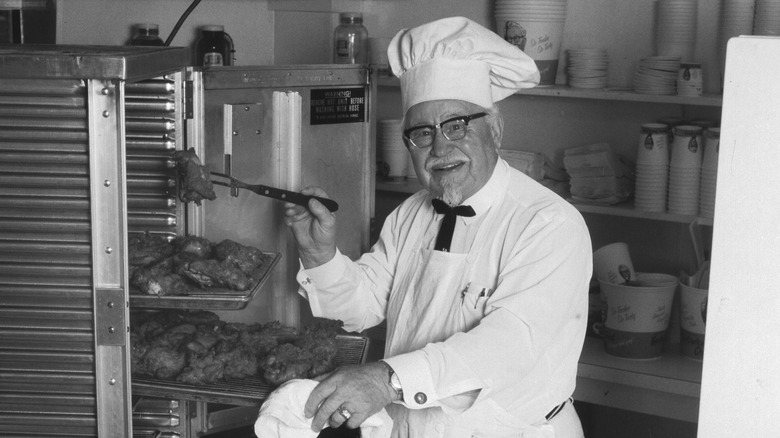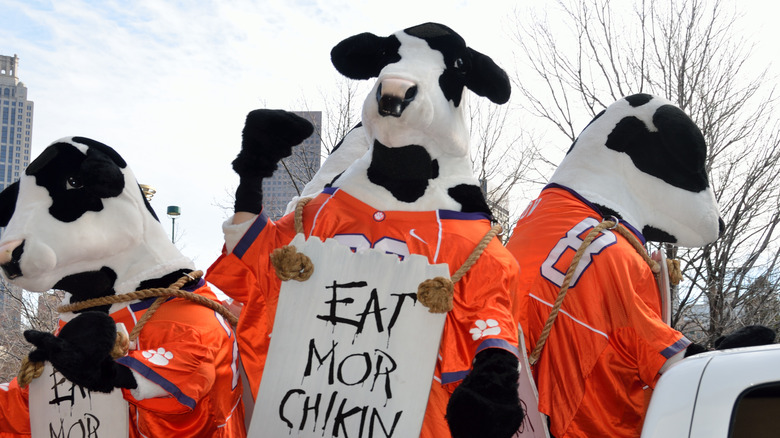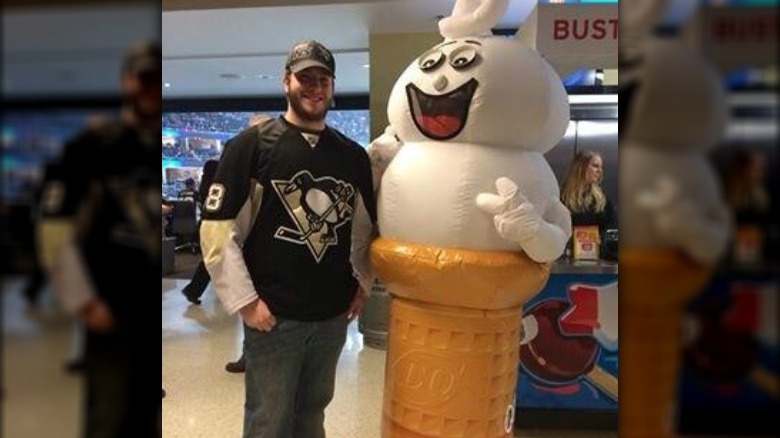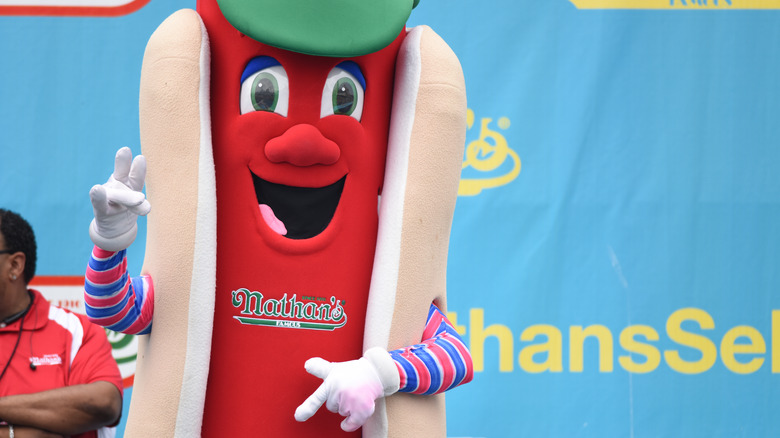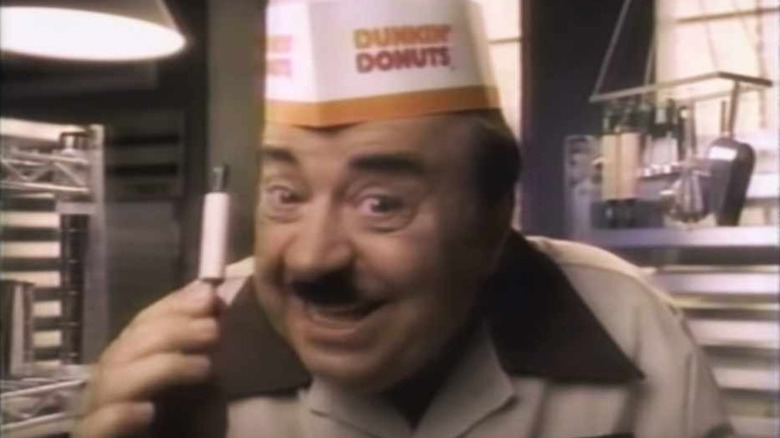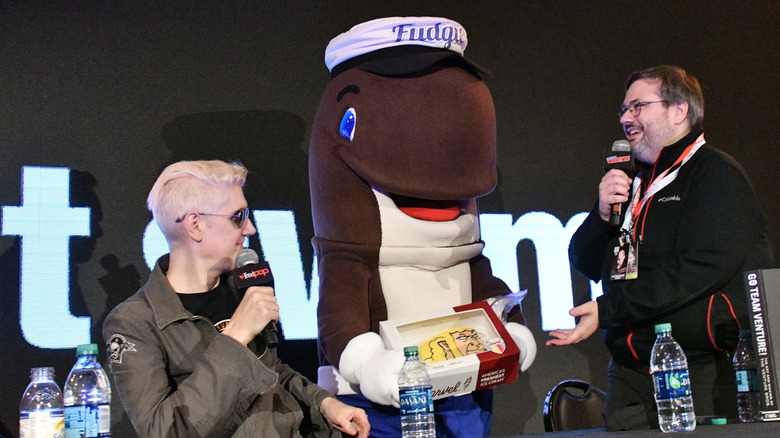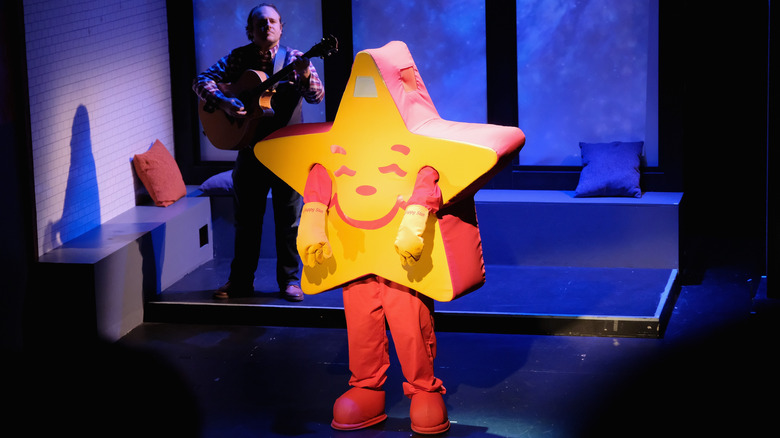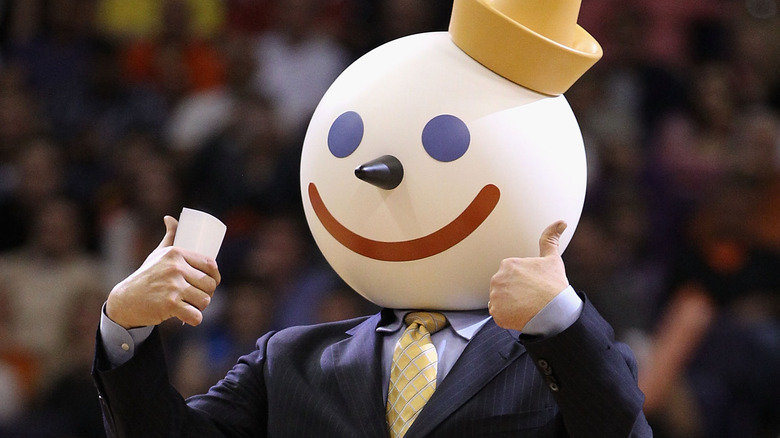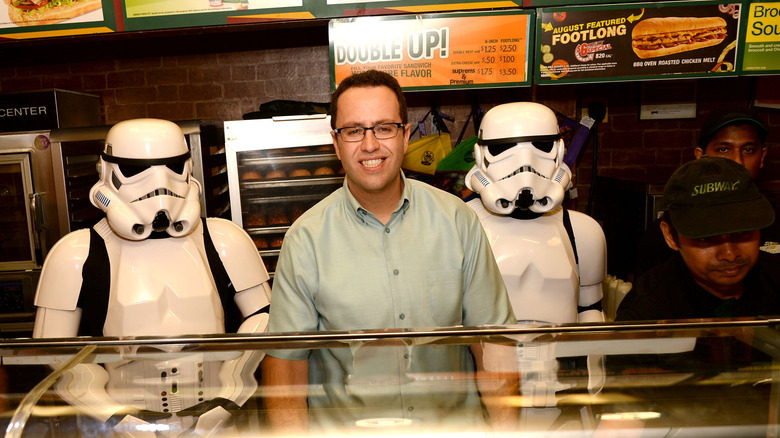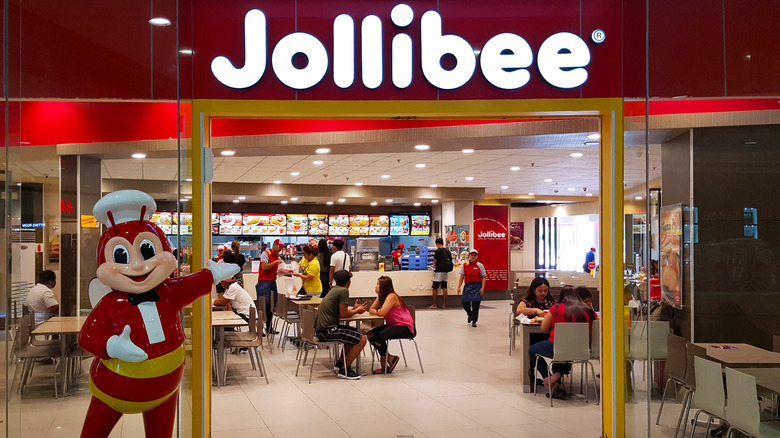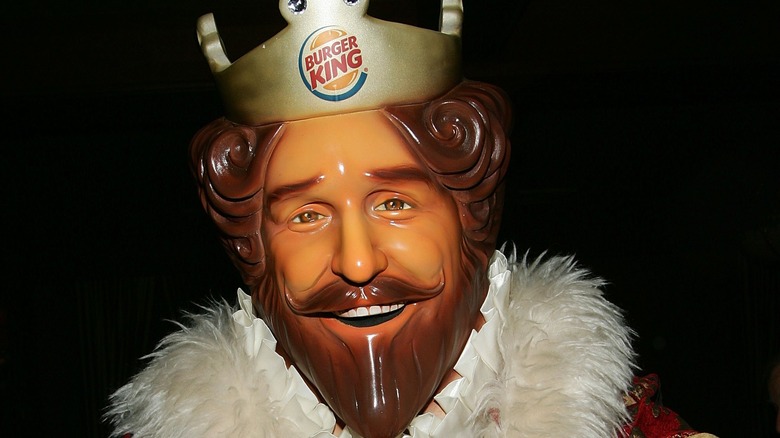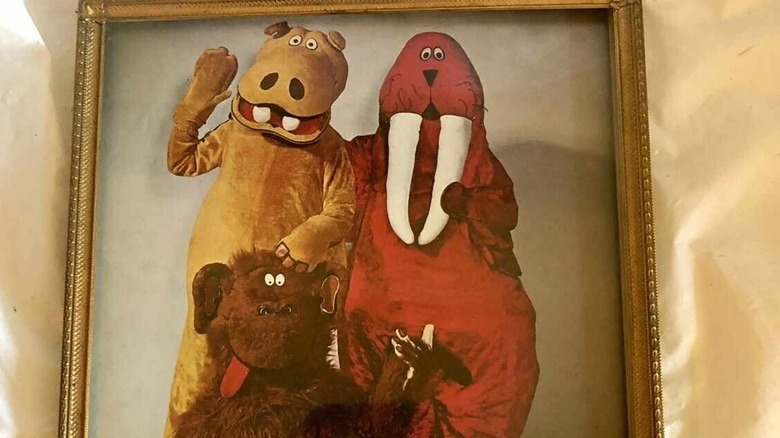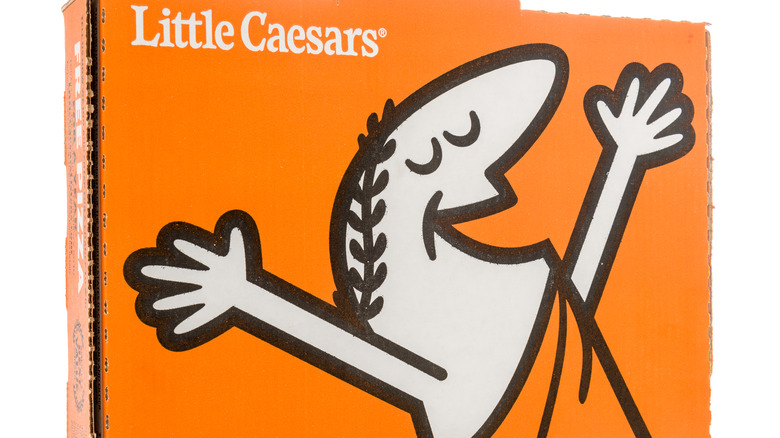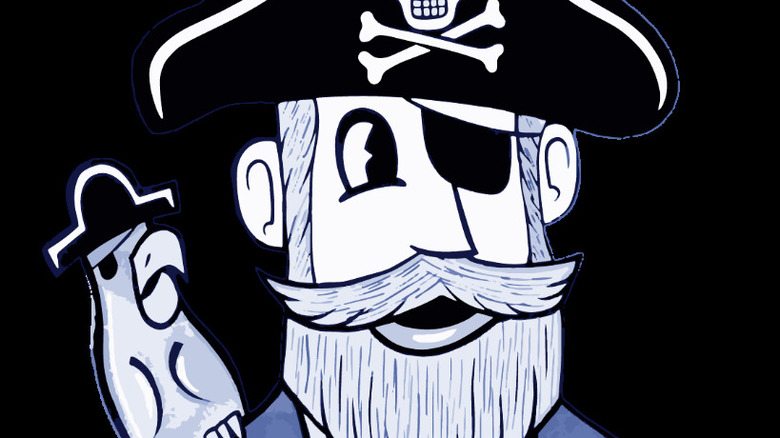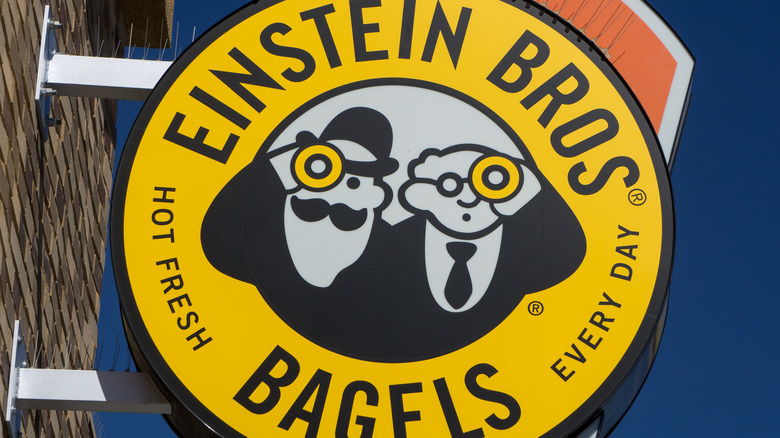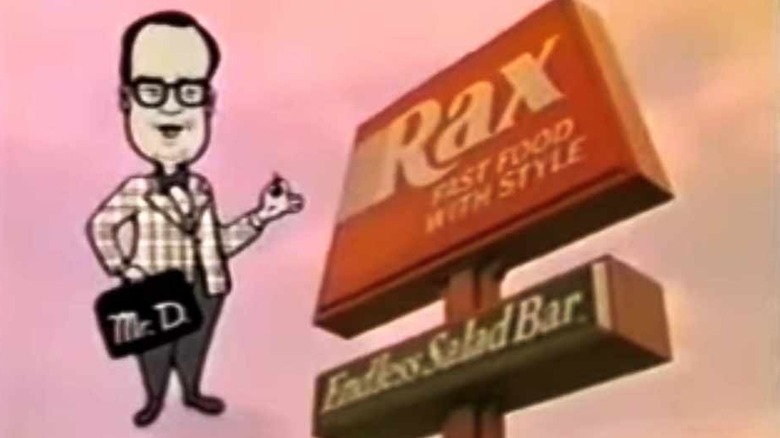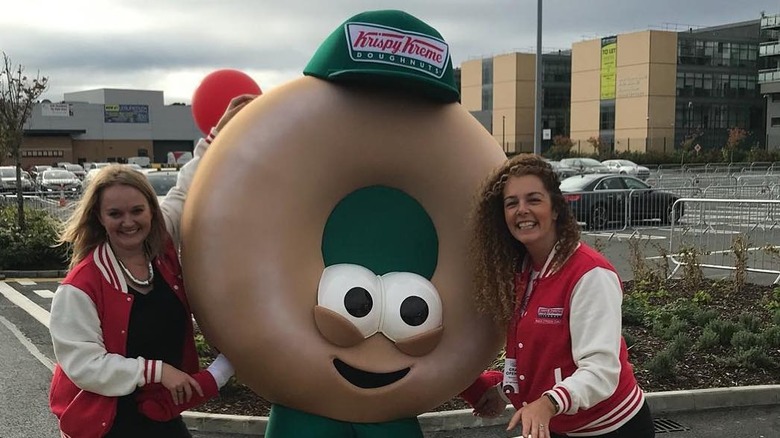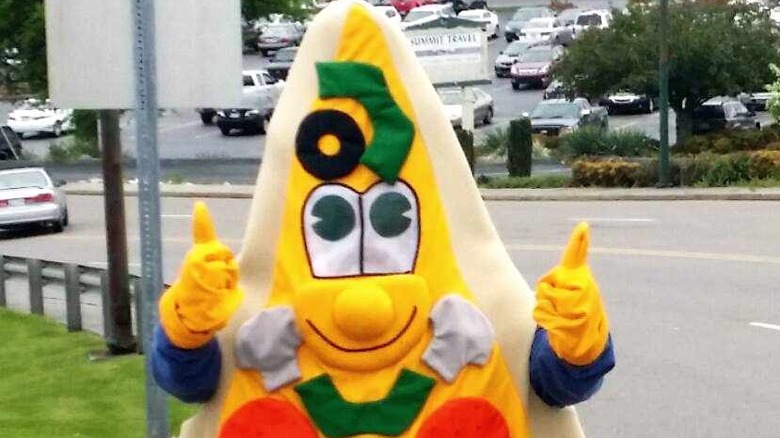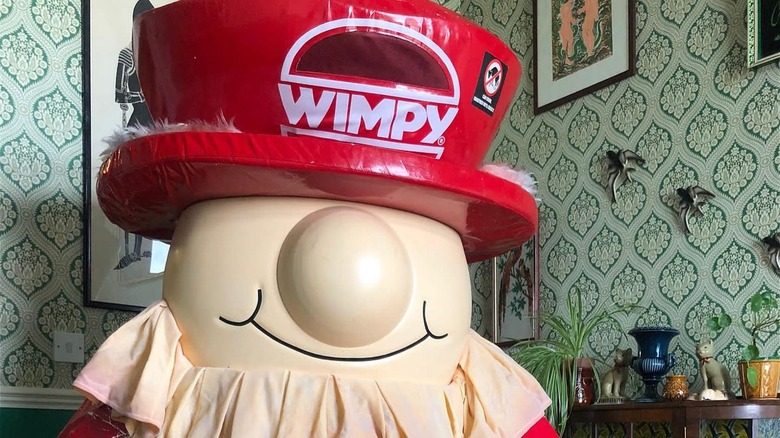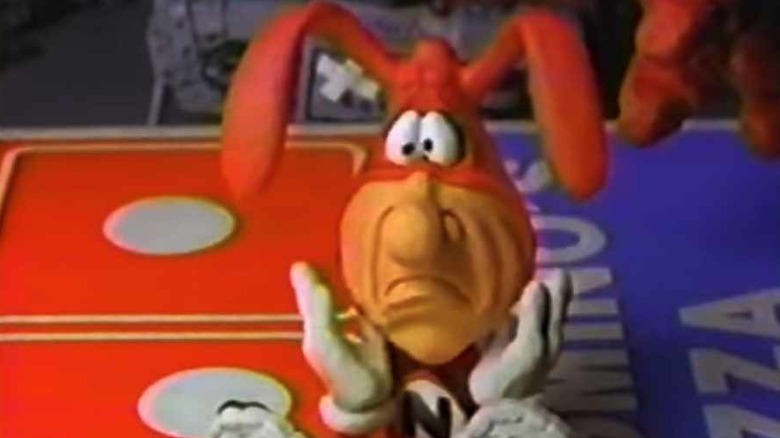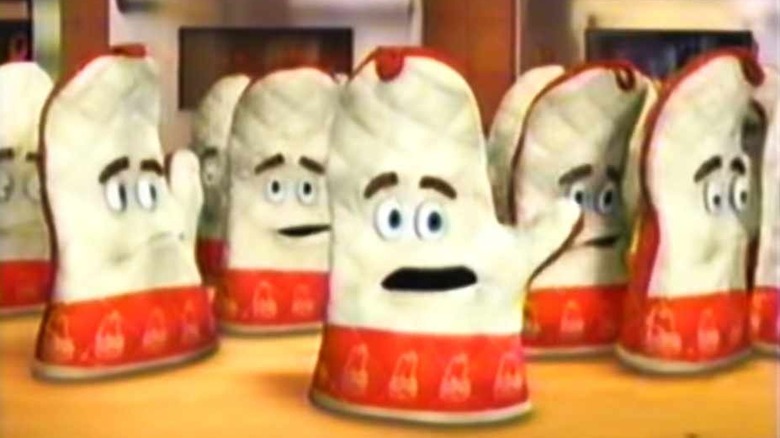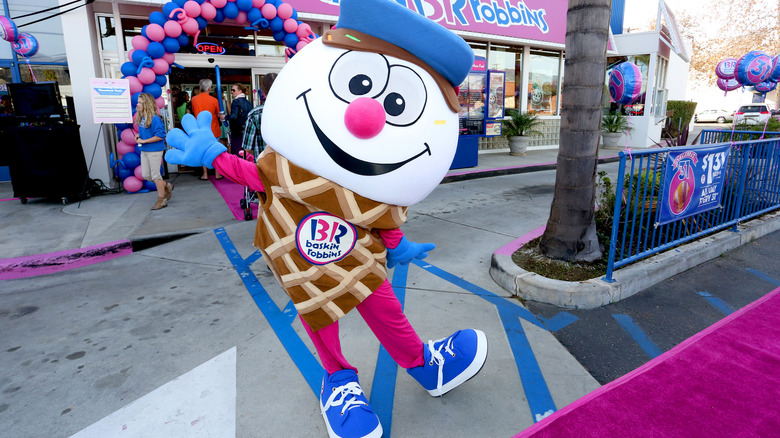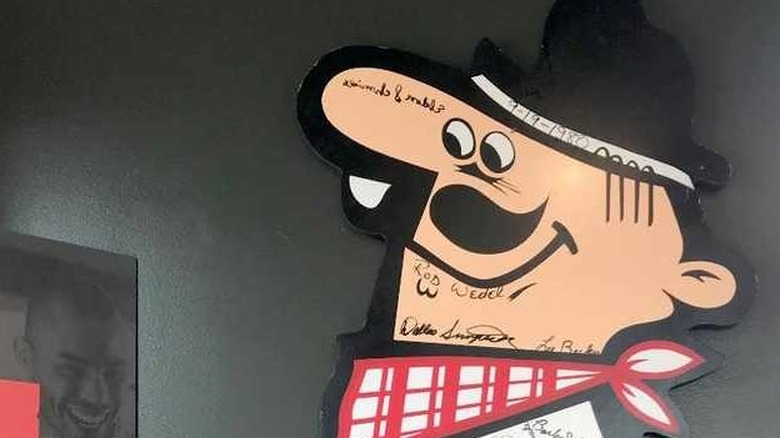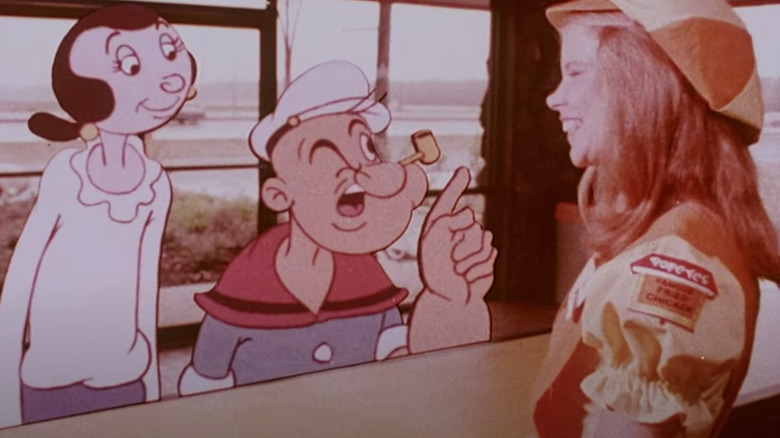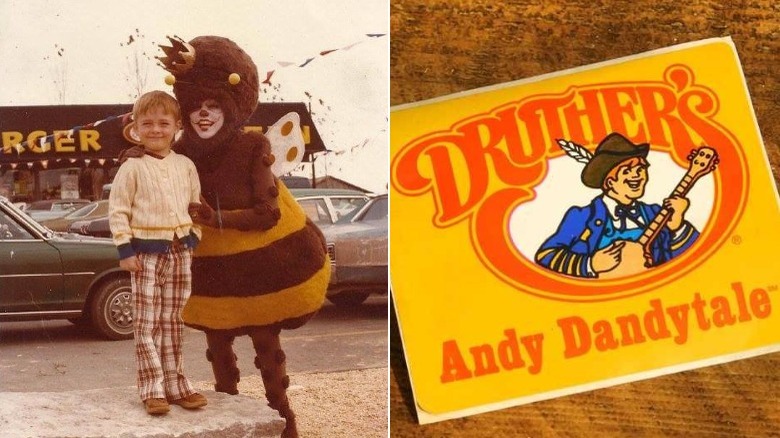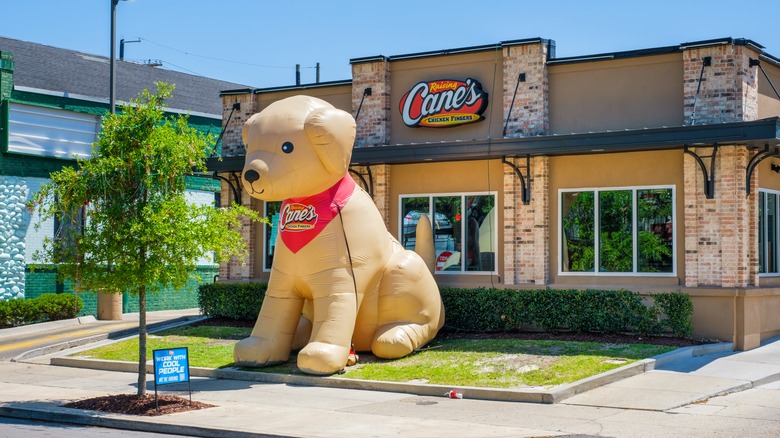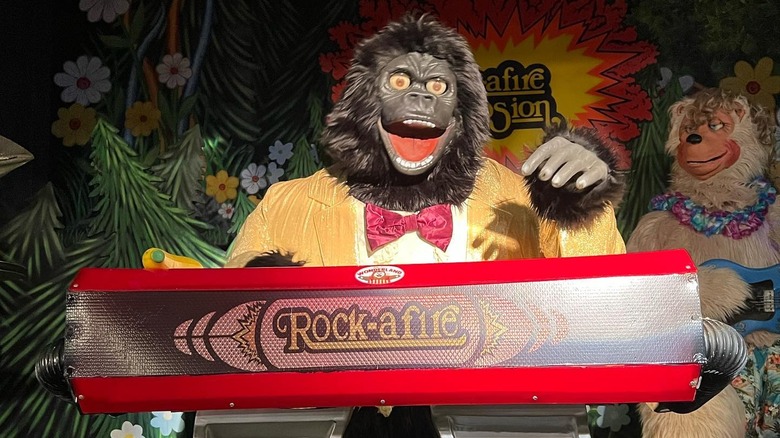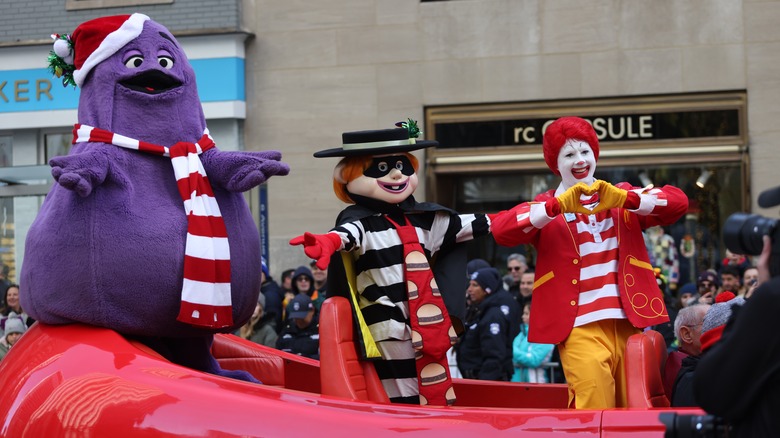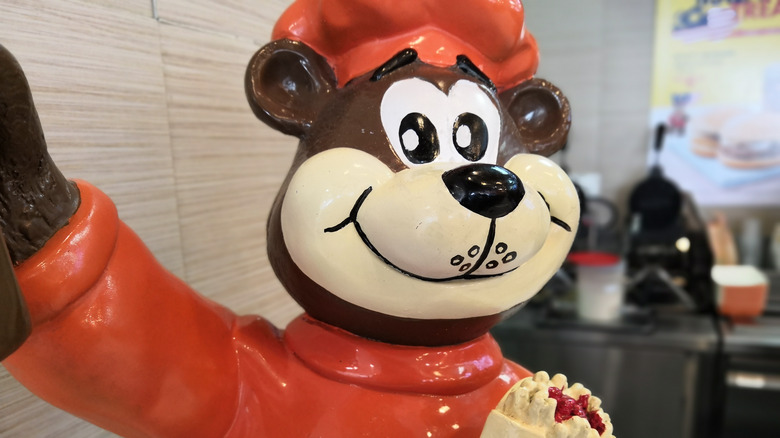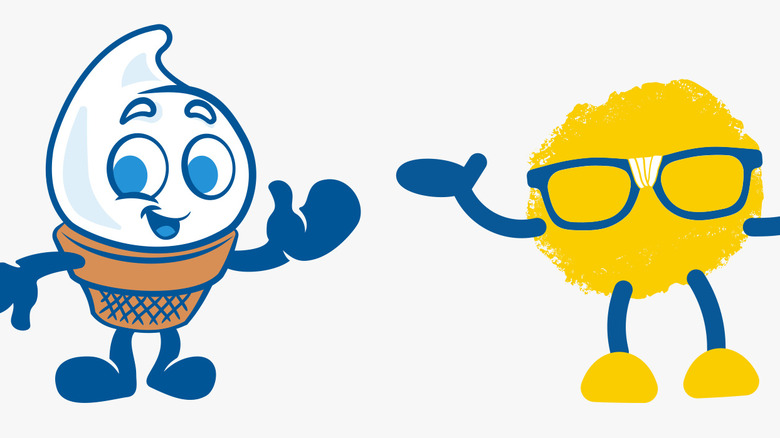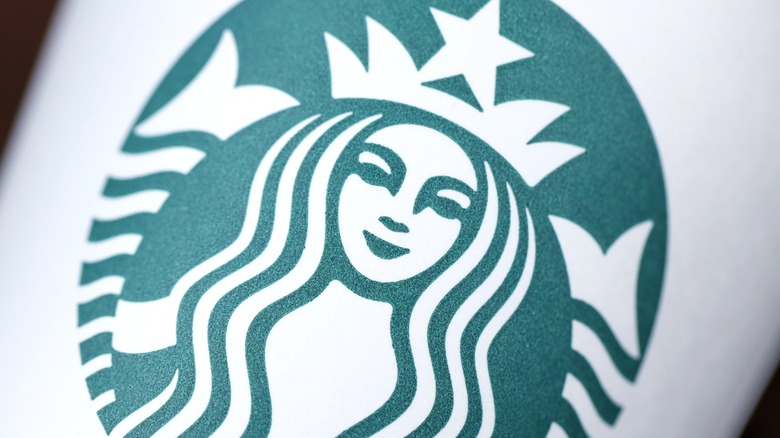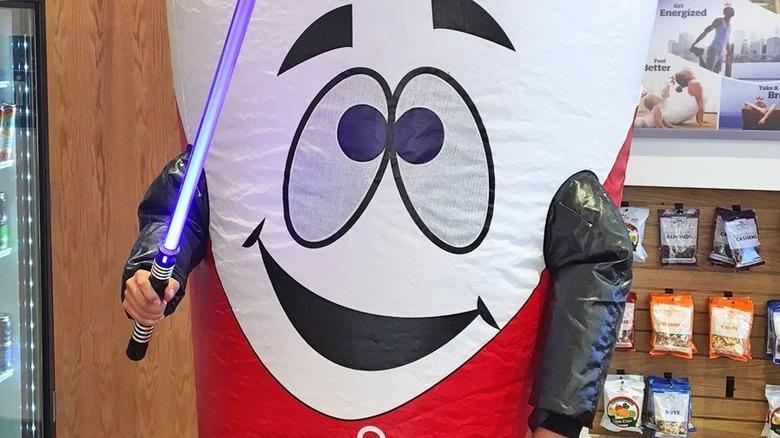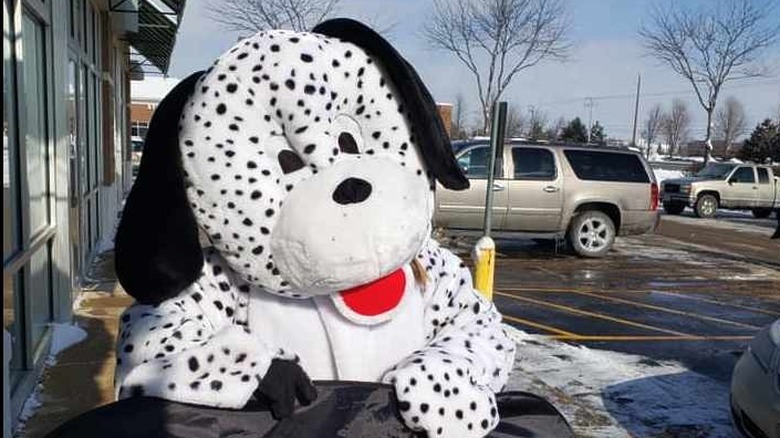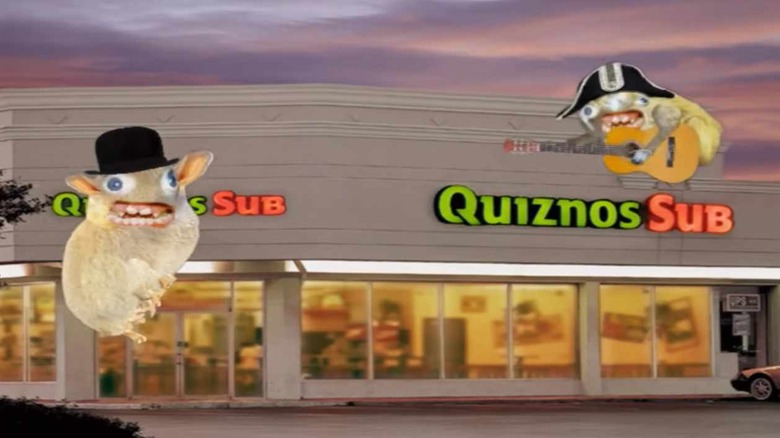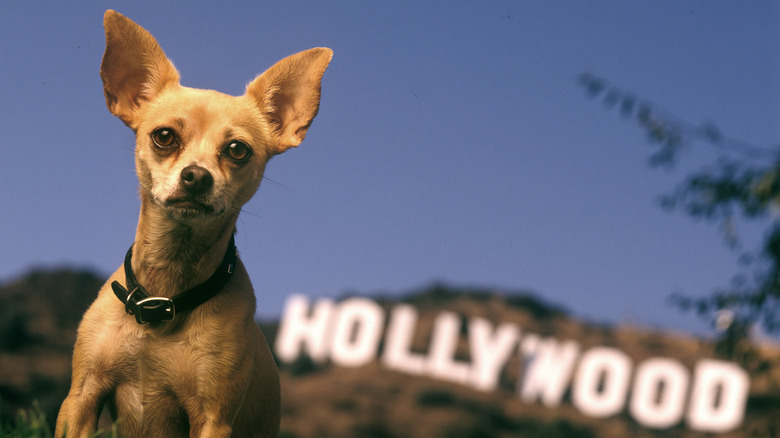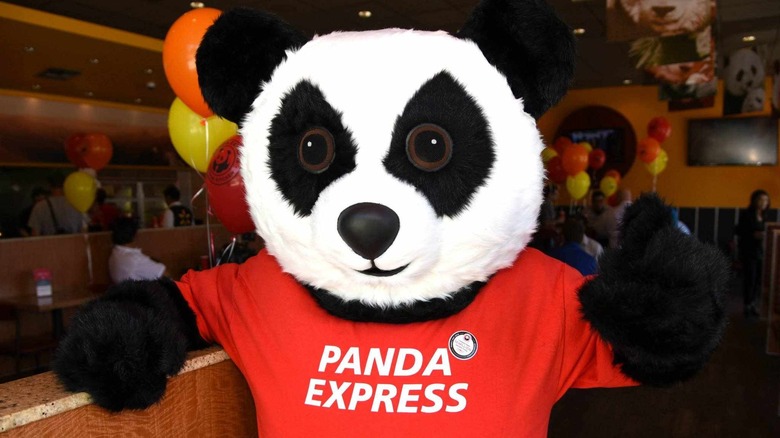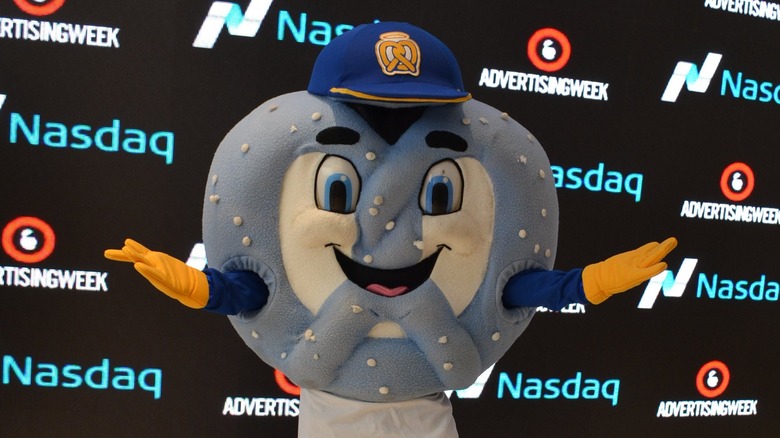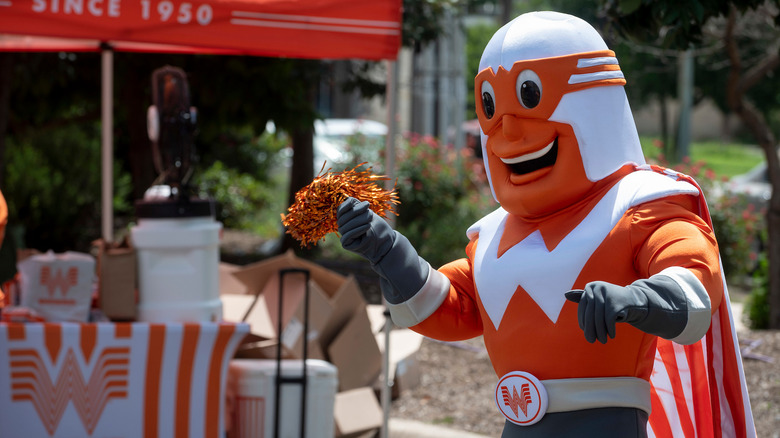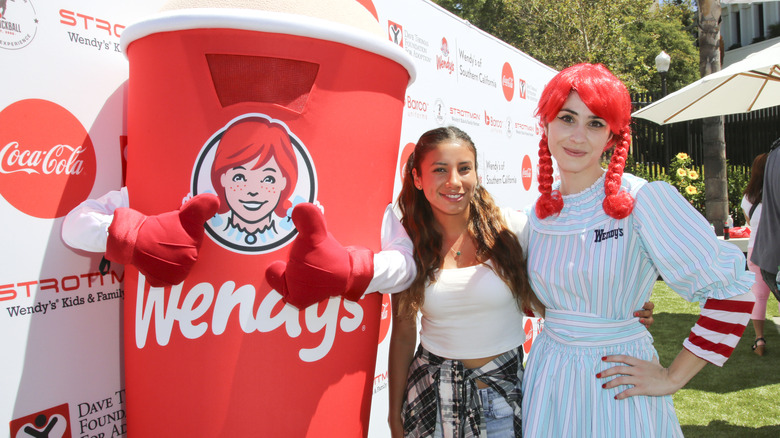The Ultimate Guide To Fast Food Mascots
To catch the eye of a hungry soul, or to remind a repeat customer of their favorite foods, the modern food industry has leaned heavily on branded iconography for logos, packaging, advertising, and general goodwill. Thanks to the rise in popularity of sports, mascots provide a different physical realm to promote a product, brand, franchise, or company.
White Castle was one of the first fast food restaurants to become a chain. While they never bothered with a mascot for themselves, many of the expanding hamburger, chicken, and pizza joints that followed suit did so with a mascot at the forefront of their brand. For the past century, beloved fast food mascots have come and gone. However, many of them are still going strong, slinging sodas and fries, offering up toys, lending a hand for new location openings, or just staying put, chilling within the confines of their logo to raise a smile in the name of eating.
So, grab a napkin, and in some cases a tissue, as we present to you the ultimate guide to fast food mascots — past and present — in alphabetical order.
Beaver (Buc-ee's)
Buc-ee's is no mere gas station, it's a Texas-sized pit stop with prided pristine bathrooms, delectable ready-to-go eats, and endless items adorned with a smiling buck-toothed beaver with a red baseball cap. The logo and mascot take after its owner, Arch Aplin III, who earned the same rodent nickname from his mother, and the Ipana toothpaste mascot Bucky Beaver.
The first Buc-ee's opened in 1982, and Aplin told Texas Monthly that the logo was commissioned, but not exactly ready at that time. When it finally was, it was smacked onto everything, including their beloved Beaver Nuggets, plush toys, and even Aplin's boots. With 80% of Texans aware of the logo (via Winthrop), Buc-ee's has been very protective of its beaver trademarks, litigating against many similar animal logos.
With the company's constant expansion, Buc-ee's beaver continues to break through new dams, having roads named in their honor, and even being "hate-jacked" by the Proud Boys.
Big Bo/Cuppy (Bojangles)
For Bojangles Famous Chicken and Biscuits, it's moved apostrophe placement in its chain name more than it's switched up its mascots. Naturally, someone dressing up in a chicken costume has long been a part of their brand, even if the early incarnations were the standard-looking yellow ones.
Over time, its chicken earned a name — Big Bo — changed his feathers from yellow to white, and earned a single piece of clothing — a red vest with Bojangles' stars and his name. Bo's vest is open wide to show off a solid six-pack, one earned perhaps by ice skating, or by getting tips from athletes, like race car driver Jeff Gordon.
Recently, an "unofficial" mascot joined the Bojangles family — Cuppy (not to be confused with the Dunkin' mascot of the same name). Cuppy is simply a Bojangles drink cup with googly eyes and one that enjoys being filled with the brand's legendary iced tea.
Big Boy (Bob's Big Boy)
Bob Wian opened his own namesake Pantry in 1936, and a customer who enjoyed his double-deck burger also regularly ran errands for him — 6-year-old Richard Woodruff. Woodruff's brother Glenn told the AP, "he was a little short chubby guy and that's where Bob got the idea. They say he (Richard) came in with checkered pants on."
Even before Bob's Pantry became Bob's Big Boy, the Big Boy mascot existed, created by Wian's former co-worker, Ben Washam. According to "Eat, Drink, Animate," Washam passed on being his business partner but donated his art skills to create the character. In the 1950s, Big Boy's image was updated to its classic look by Manfred Bernhard.
Bernhard spearheaded a comic book "The Adventures of Big Boy," which Stan Lee wrote the original issue for. It also featured Big Boy's girlfriend Dolly and dog Nugget. In 2020, it was announced that Dolly "replaced" her boyfriend as the mascot, which caused so much of a stir that the company had to assure fans Big Boy wasn't going anywhere.
Big Zach/Little Zach/Little Zuzy (Zaxby's)
Zaxby's is a chicken chain with three clucky mascots, two with names that tip their plumes to their co-founder Zach McLeroy. The main chicken, seen on their logo, as well as in costume form, is known as Big Zach.
The mascot responsible for most of the gospel spreading of Zaxby's is known as Little Zach, or LZ for short. Little Zach is an athletic chicken with a yellow tank top and blue shorts. He delivered the game ball at the 2015 First Responder Bowl and once got chummy with Tim Tebow. One former Little Zach portrayer worked their way up to collegiate ranks by filling out Miami's Sebastian the Ibis' mascot costume.
The face of Zaxby's Kidz Club, LZ is sometimes joined by pal Little Zuzy, who's a tad shorter, wears pink, and wakes up with dreamy eyelashes.
Blazin' Bill (Buffalo Wild Wings)
Buffalo Wild Wings didn't originate from upstate New York, but it honors its chickeny birthplace by employing the use of a buffalo for its logo along with a mascot by the name of Blazin' Bill. In some places, he's referred to as Blaze, and in Delaware, he goes by Jester. As a big fan of sports, he wears a yellow jersey with his name and number 82 on its back (a nod to the restaurant's founding in 1982).
The current costume is made by the fine folks at Olympus Mascots, who are so proud of their work that it's featured on their website and promo video. Bill surely gets around, being seen in the Philippines, a blimp video game, and packing heat with a Tweet-Shirt Cannon. Just bear in mind if you're interested in performing the role of Bill, you must be "comfortable moving inside a suit with very limited field of vision."
Blimpie Bear (Blimpie)
Time has not been kind to the sub shop Blimpie, which has seen its locations drop significantly since 2017, according to 2020 data from Entrepreneur, but it's hard to shake the memory of their adorable mascot. Blimpie Bear started showing his face in print ads as far back as 1986, and later became a live mascot with a white shirt and green or brightly striped shorts.
When blown up as a giant inflatable, Blimpie Bear wears a green tee and has been so attractive to some passersby that he was stolen twice from a Lenexa, Kansas location.
Bobby Bun (Schlotzsky's)
Schlotzsky's wasn't named after their founders (Don and Dolores Dissman), or really anyone at all. As the story goes, the name was likely made up while Don played with his children, rearranging alphabet blocks until he found a name he liked. No known backstory exists on where their mascot got his name, but Bobby the Bun Kid started making appearances at the deli in the mid-90s.
The brand eventually ditched the "the" and "kid" in the mascot's name to take on the more streamlined name, Bobby Bun. Covered in sesame seeds, with hands close to his bright smile, the round bun features tomato and lettuce around its edges.
To set a good example for others, Bobby Bun is a big fan of fitness. He's worked as the face of a Bun Run, sponsored putting contests, and has led others in warm-up exercises.
Chef Marco (Marco's Pizza)
Pasquale "Pat" Giammarco brought a taste of his old home — Italy — to his new home — Oregon, Ohio when he opened Marco's Pizza in 1978. The mustached founder was such a fixture in his own restaurant that his likeness was caricatured into a dough-tossing logo, Chef Marco, with a trademark filing that dates back to 1983.
More than a decade later, Chef Marco's face was enlarged and manifested in costume form. The pizza-pie-eyed character stays true to his culinary uniform, donning a toque blanche with his name on it, and a three-button white chef's coat. Bushy mustache aside, Chef Marco's most noticeable feature is his giant smile, which happily greets customers at the restaurant.
Chicken (El Pollo Loco)
When El Pollo Loco decided to drum up more interest in their poultry products, they developed a chicken mascot, even once hiring the famed San Diego Chicken to help open one of their Florida-based restaurants. That said, the brand's own chicken wasn't always depicted uniformly. It's been seen wearing an apron, adorned with colorful plumage, and blown up as a branded inflatable with a cowboy hat.
In 2019, Brad Pitt admitted to Ellen DeGeneres that he once worked as the chicken, and although he "got flipped off a lot," he had "no shame," adding "man's got to eat." Pitt actually shared the job and costume with friend Bill Joslyn, who told the St. Louis Post-Dispatch "it was disgusting to have to put on the suit after each other."
Chuck E. Cheese (Chuck E. Cheese)
One of Atari's co-founders, Nolan Bushnell, may have made a name for himself in videogames in the 1970s, but according to the other founder, Ted Dabney, his heart was set on opening a "pizza parlor with talking beer barrels." (via Fast Company). When Bushnell opened his first restaurant, Coyote Pizza, he ordered a mascot to match the name but ended up with a rat costume, instead. Bushnell dubbed him Rick Rat, but he was eventually renamed Big Cheese, then Chuck E. Cheese (the "E" standing for "Entertainment").
Chuck E. Cheese became the face of Pizza Time Theatre, which opened in 1977 in San José, California. Similar pizza-tainment places soon sprouted up, and after financial troubles, Pizza Time Theatre merged with ShowBiz Pizza Time in 1985. Ultimately, the merged brands made Chuck E. Cheese the head cheese.
In 2012, the mouse got a rock n roll cartoony makeover, and two years later, a sad origin story as an orphan who never knew his birthday but always enjoyed celebrating others.
Churchie (Church's Chicken)
Not long after George W. Church Sr. opened his eponymous chicken restaurant Church's in 1952, the mascot Churchie was hand-sketched at his family's kitchen table. The happy, rotund chef carrying a fork could be found on boxes of fried chicken, their groovy uniforms, and even their official spy camera.
In the '70s, Churchie came to life and made the rounds at youth career fairs and Church's franchises. He even performed at a pep rally for the University of Florida's football team in 1971.
By 1988, Churchie had transformed from a human mascot into a chicken, but Church's never forgot their man, even pondering in 2013 if he should make a return. Seven years later, during the pandemic, the true Churchie returned to the brand's to-go boxes, bringing his winning smile to those dining at home.
Colonel Sanders (KFC)
Harland Sanders served in the military, but only became "Colonel Sanders" when he was given the honorary Kentucky Colonel status and title in 1936. He later began dressing the part when he imparted his 11 herbs and spices secret to Pete Harman in 1952, who then launched a finger-lickin' good empire in Sanders' image — Kentucky Fried Chicken.
While Col. Sanders got a piece of the action, he served the brand more as a logo, living mascot, and ambassador, also making cameos in movies like "Blast Off Girls" and "Hell's Bloody Devils." Decked out in his signature get-up of a white suit, black western bow tie, and black shoes, the white-haired and goateed spokesman was an ever-ready presence in advertising, as well.
When Sanders died in 1980, KFC waited 14 years before letting someone else assume the Colonel role. They started with Henderson Forsythe, and have since used a who's who of stars, including Jason Alexander, Reba McEntire, and even Robocop.
Cows (Chick-fil-A)
Chick-fil-A once tweeted "#IfThe80sNeverStopped Doodles would still be our mascot," but then the '90s came, and so did the Cows. The New Yorker posited that if Chick-fil-A "is a megachurch, the Cows are its ultimate evangelists." For the Georgia-based chain that perfected the chicken sandwich, it's all about their poor-spelling cows who loudly tell humans to "Eat Mor Chikin!"
The advertising campaign was drummed up in 1995 by the Richards Group, who were told by Chick-fil-A to create a "billboard that people will laugh about in church on Sunday" (the one day the restaurant is closed). David Ring was the original art director and told AdChat that the painting cows were "inspired by Gary Larson's Far Side cartoons and the way he illustrated things."
While they parted ways with the Richards Group 22 years later, the Cow's legacy still moo-ves forward today. In his biography, "Eat Mor Chikin: Inspire More People," founder S. Truett Cathy said, "The lesson from the Cows is the lesson of my life: Take advantage of unexpected opportunities."
Dennis the Menace/Curly Top (Dairy Queen)
Dairy Queen's reign began in 1940 and started rolling out mascots a decade later. Curly the Clown was given a brief chance at the gig, an Eskimo Girl was kept above some of their locations, and the Dilly Bar was once one happy cowboy. By the 1960s, when the company remodeled the stores with their famed red roofs, a Dutch maid named Little Miss Dairy Queen lived atop them.
Hank Ketchum's "Dennis the Menace" comic strip often shared same-page real estate with Dairy Queen in newspapers, and by March 1972, the former became the latter's spokestoon. Ketchum told the Leader-Telegram that the partnership that ended in 2002 wasn't "in-your-face," which suited Dennis, who "is not a huckster."
Starting in the late 1980s, DQ tapped Curly Top as an in-person mascot that looks like the restaurant's signature ice cream cone. But life isn't easy for Curly Top, who has experienced deflation, assault, and cone-napping.
Frankie/Frankster (Nathan's Famous)
In 1916, Nathan Handwerker started selling his soon-to-be "famous" hot dogs. When Nathan's expanded in the 1950s, a mascot joined in on the fun, who went by the interchangeable names of Frankie or Frankster. One of the first official mentions of the mascot was in 1973 when the Daily News noted that the chef hat, bow tie, and apron-sporting Frankie Man (a name coined by fans) was "a seven-foot hot-dog shaped robot with, a living person inside."
In 1992, Frankster made a major comeback, featuring in signage and kid meals. And the mascot is also a staple at the annual Nathan's Famous Hot Dog Eating Contest. Julie Rosenberg has embodied Frankster's 40 pounds of foam for over 15 years, and she told The Daily Beast the costume smells like "a combination of a locker room mixed with old sausage."
Fred the Baker (Dunkin')
Michael Vale made quite a face for himself as a TV pitchman, first as a Clio Award winner playing Sam Breakstone, and later with glazed eyes for Dunkin' Donuts (now known simply as Dunkin'). According to his wife Nancy, Vale gave the early-to-rise baker he played "the name Fred because it just seemed to connote a nice, lovable guy. He was Fred, the guy next door," (via Boston Magazine).
In 1982, the sleepy "time to make donuts" ads started airing, and "Fred" became famous in his own right. When Dunkin' shifted its focus to coffee and drinks, Fred was taken off the air in 1997, but was given a hero's parade and kept on as a brand ambassador. Vale told Newsday, "I can now sleep past 4 a.m."
These days, it's Dunkin' Cuppy who's making the rounds and grounds as the company mascot.
Fudgie the Whale (Carvel)
Aiming to make Father's Day 1977 an especially fun time, Tom Carvel, the founder of Carvel Ice Cream and Cake shops, created Fudgie the Whale — a whale-shaped chocolate cake. The cake took off, and for more than 40 years, Fudgie the Whale has served as a beer, an intern, a Santa cake, and even manifested into a physical "spokeswhale."
As such, Fudgie the Whale is a big fan of the New York Mets, having been seen hanging around the infield. He was even ready to drop off his resume with the ball club to replace Mr. Met in 2017.
Happy Star (Carl's Jr./Hardee's)
Carl and Margaret Karcher turned their popular hot dog stands into Carl's Drive-In Barbeque, then in 1956, they opened "a smaller but speedier version of the original" called Carl's Jr. Around the same time, a bright yellow, five-pointed Happy Star appeared on the scene, with a wide smile that matched Mr. Karcher's. The two actually starred in a series of talkative animated TV ads together in the 1990s.
According to his LinkedIn page, Happy Star's role with Carl's Jr. and Hardee's (which are one and the same) is "rescuing people from the monotony of breakfast, lunch, and dinner," and "generally being a chill guy to hang out with." The mascot has spread cheer and food in an off-Broadway show, a 72-hour Twitch live stream, as a Shrinky Dink, and has even lent his body to pad Rob Dyrdek's fun stunts.
Jack Box (Jack in the Box)
Jack in the Box doesn't mind clowning around, literally, as the chain that started in San Diego in 1951 incorporated a circus jester atop their stores and novel drive-thru speakers boxes from the get-go. People dressed as clowns would make personal appearances, and Jack got animated (literally) for kids' meals in the '70s.
Looking to remake their image, the clown went "bye-bye" in an explosive 1980 commercial. After an E. coli outbreak in the early '90s, the brand was in need of another makeover and Jack returned "as head of Jack in the Box." In one of the longest-running fast food campaigns, Jack Box has taunted Col. Sanders and the Taco Bell chihuahua, gotten hit by a bus, sued FTX over their "inferior version" mascot, and introduced his family, letting the world finally know who he inherited his nose from.
Jared (Subway)
When an Indiana University student lost 245 pounds in his own self-created "Subway Diet," it caught the attention of the student newspaper in 1999, then was picked up by Men's Health Magazine for "Stupid Diets That Work." Early in the following year, Subway tapped that slimmer Hoosier, Jared Fogle, to tell his "story" in a series of ads.
Over the next 15 years, and more than 300 commercials, Jared worked as the face of Subway, making endless public and corporate appearances, popping up on "Saturday Night Live," "Community," Adam Sandler's "Jack and Jill," and "Sharknado 2" and "3."
Things ran afoul in 2015 right before Subway was about to rebrand Jared as a family man. Fogle was arrested and later found guilty of sex acts with minors and the distribution of child pornography.
Picking up the slack have been two mascots it introduced in 2010 — Subman and Subway Dude.
Jollibee (Jollibee)
Tony Tan Caktiong, the founder of the popular Phillippine-based Jolibe fast food restaurant, wanted his employees to report to the stores both happy and ready to work. He worked with a marketing consultant to overhaul the restaurant's image, and ultimately added an extra "l" and "e" to the name to become Jollibee, as in "jolly bee" (via CNBC). The consultant Manuel Lumba came up with the bee mascot, recalling to Entrepreneur how he "added a chef's hat to suggest quality food, a red dinner jacket with a vest to boot, white gloves that reminded me of Disney characters."
Jollibee proved to be such a homegrown winner they were able to keep McDonald's at bay with Caktiong telling Forbes, "Filipino kids prefer our mascot to the clown." More characters joined, many representing new products, like Chickee, Lady Moo, Mico, Champ, Mr. Yum, Twirlie, Popo Potato, and Hetty Spaghetti. They even had a popular television series called "Jollitown" that ran for 82 episodes. Jollibee has expanded globally, and the buzz is always palpable when the bee is around.
The King (Burger King)
James McLamore and David Edgerton first franchised Insta-Burger King in Miami in 1954, creating the flame-broiler, later the Whopper, and eventually dropping the "Insta" from the name. Then in 1955, the duo coronated the brand's noble mascot, The King, who happily popped a squat on a bun with a milkshake in hand. By the late '60s, a cartoon was installed on the throne, letting the world know that this is "Where kids are King."
To keep up with the groovy McDonaldland crew, in 1977 the company tapped Fred Barton to be the "Marvelous Magical Burger King" who reigned down the fun along with the Duke of Doubt, Sir Shake-A-Lot, Wizard of Fries, and Burger Thing.
In 2004, the brand's ad agency stumbled upon a '70s-era Marvelous Magical Burger King helium balloon tank topper and was inspired to make a creepy plastic King who was given the keys to the kingdom. He was shelved in 2011 ... but this latest king keeps returning to rear its ugly head.
Krystal Kritters (Krystal)
Lost to time, but not to those who cherish the memories, a trio of costumed animals were the furry faces of Krystal starting in 1973. A brown monkey, a yellow hippo, and a red walrus made up the Krystal Kritters, who were introduced as "colorful characters that are going to make Krystal Restaurants more fun than ever for your family."
The Kritters were "chosen [as] the top promotional concept in the national restaurant industry for 1974" (via AP), and spread their faces onto magnets, iron-ons, stuffed animals, and light switch covers. They supported race car driver Grant Adcox, made a scene at a Purim celebration, and even hung around then-future President Jimmy Carter.
By 1985, the Kritters shared the stage with spokespeople Cowboy Sid and Sheila the Wonder Horse before being phased out.
Little Caesar (Little Caesars)
Mike Ilitch wanted to name his Garden City, Michigan fast food joint (which originally also sold chicken, fish, and shrimp) Pizza Treat, but his wife Marian felt something was missing. According to DBusiness, they added her nickname for him — Little Caesar — to the title. For the small sum of $200, artist Don Silverstein drew up a toga-clad, pizza-eating character, creating the logo that is still with us today. Mike told the Detroit Free Press, "I fell in love with it," adding, "He was a goofy looking guy, wasn't handsome."
Little Caesars opened in 1959, and three years on, their logo was seen by legions of eaters when he became a 3D statue watching guard above the stores. Little Caesar, who went to mascot school with Mr. Pringle, loves repeating the word "pizza," eventually traded in his white toga for an orange one, added "LC" patterns to it and manscaped his chest hair, and even had a baby. His image was also painted on the roof of the aptly named Little Caesars Arena, home to the Detroit Red Wings professional hockey team.
Long John Silver (Long John Silvers)
Named after the infamous sea cook from Robert Louis Stevenson's classic 1883 novel, "Treasure Island," Long John Silver's founders took advantage of the pirate's name recognition to help launch their brand.
The peg-legged pirate, with an eyepatch and parrot, has long been a part of the company's iconography, even burying treasure for customers to find. When Long John Silver's started to push their kids' menu in the middle of the 1970s, a crew was formed, with roguish characters like Ben Gunn, Billy Bones, and Bart Bluebird gracing doubloons, forks, and of course pirate hats.
In 1995, the brand turned to Mr. Norman Bigfish to be their "chairman" and spokesfish, but he went "belly up" for being "a little pushy" to viewers (via Lexington Herald-Leader).
Melvyn and Elmo Einstein (Einstein Bros. Bagels)
The original Einstein Bros. Bagels mascots (Bernie and Melvyn), were trademarked in 1989 by Bagel & Bagel Bakery & Noshery, one of the predecessors to the modern chain. They were inspired by the family who founded the original restaurants — first named Bagel Bros., which then became Bagel & Bagel. As the co-founder of Bagel Bros. Gail Lozoff explained in an interview with The Daily Meal, it was her husband Richard's uncles, Bernie and Melvyn, who inspired the original mascots' names, along with the likenesses of Richard and his brother-in-law. Richard inspired the little bespectacled brother Bernie, and his brother-in-law the bearded and chapeau-wearing Melvyn.
As the bagel eatery grew, changed hands, and merged with other restaurants, Bernie and Melvyn were sidelined for a while. But when the bagel business eventually donned its current name, Einstein Bros. Bagels, it resurrected the original logo characters, although Bernie was sadly renamed Elmo.
Mr. Delicious (Rax)
In the late 1970s, Rax Roast Beef used the mascot Uncle Alligator to help sell kids' meals, but as stores started closing in the 1990s, they threw a mascot Hail Mary and enlisted Mr. Delicious, aka Mr. D. He became the adult in the room telling it like it is about the "adult fast food place."
Rax believed in Mr. D (and his "Dickety-dee" catchphrase) so much that they made a 13-minute promotional video extolling the virtues of the spokesman who they thought was "going to go down as one of the classic characters in advertising history." Unfortunately for all parties involved, it just wasn't meant to be. Months after introducing Mr. D in 1992, Rax declared bankruptcy.
Rax still exists today, and current owner Rich Donohue told The Daily Independent, "A lot of people say Mr. Delicious is what killed Rax, but there were already problems there."
Mr. OG (Krispy Kreme)
In America, Krispy Kreme Doughnuts are so well known that they don't even require the use of a mascot. However, for their hole-y brethren from across the pond, in the U.K. and Ireland, Mr. OG is more than happy to show his face in any crowd. The mascot's initialism name references the company's pride and everyone else's enjoyment — the Original Glazed donut.
Mr. OG is brown and round with a logo-branded hat and squishy cheeks that expand his smile and keep his eyes in place. In company green, white, and red, he has the can-do(nut) attitude and proved so adorable that plush toys were made of him for Christmas.
Mr. Slice (Papa John's)
Out of a "broom-closet operation" in his father's Indiana bar, "Papa" John Schnatter slowly worked his way up into one of America's top five grossing pizza places. Schnatter was not only the name behind Papa John's but the face as well, with his high-wattage smile on pizza boxes and an endless stream of TV ads. Schnatter fell out of public favor when he uttered a racial epitaph in 2018 and was forced out as chairman of the chain he founded. In 2021, the company lost the apostrophe in its name, which prompted Schnatter to say in a statement, "they can't have Papa Johns without Papa John."
Luckily, Papa Johns has a less controversial figurehead picking up the pieces these days — Mr. Slice. The six-foot costume is patterned with mushrooms, green peppers, black olives, pepperoni, and eyes. He's a pro at tossing dough and loves to get down and boogie.
Mr. Wimpy (Wimpy)
Edward V. Gold started a hamburger restaurant in 1934 named after the Popeye comic character Wimpy. The restaurant quickly sizzled into a fast food chain that became popular in the U.K., Australia, and South America.
A Ziggy-like foam mascot debuted for the company in Brighton, England in 1978. His name was Mr. Wimpy, and his getup included a beefeater costume (a natural fit as he promoted the eating of beef), a bulbous nose, and a giant hat that obscured his eyes.
Mr. Wimpy had his own video game, and a comic book called "Muncher." He was noted for calming children during a robbery, and may even have been knighted by The Queen. While Mr. Wimpy almost died in a "hit and bun incident" accident, he still stands today.
The Noid (Domino's Pizza)
Hoping to convey the image of fresh pizza delivered fast, Domino's Pizza worked with the ad agency Group 243 and Will Vinton Studios (who claymated the California Raisins) to create their bad guy mascot Mr. Noid, named after a shortened version of what Domino's employees called themselves — Dominoids (via Slate).
On September 22nd, 1986, the red spandex-wearing, stretchy Noid villain to "avoid" launched to an unsuspecting world. Brand awareness instantly swelled, and customers bought up t-shirts, bendable figures, a "Yo! Noid" video game by Nintendo, and almost got to see a Saturday morning cartoon. But after a man with the last name Noid held hostages at a Domino's in 1989, the Noid was nixed by the brand. That said, the Noid did return in 2011 for a viral promotional game, and again a decade later to try and stop the Domino's self-driving delivery robots.
Oven Mitt (Arby's)
After first trying a more mature approach to selling roast beef with Barry White's smooth voice in a series of "Appetite Man" spots, things got animated in 2003 when Arby's tried on its mascot Oven Mitt for size. The spokesthing, visualized by the same studio that gave rise to The Noid, was voiced by Tom Arnold.
In just two short years, the Mitt was omitted, being roasted by The Onion and comedian Jim Gaffigan, who wrote in his book "Food: A Love Story," "Arby's tried to replace the cowboy hat with a talking oven mitt ... Unfortunately, the oven mitt just made people buy more Hamburger Helper, so Arby's went back to the hat."
Pinky the Spoon/Coney (Baskin-Robbins)
Brothers-in-law Burt Baskin and Irv Robbins merged their individual ice cream shops in the late 1940s and chose a hyphenated name order based on a coin flip. Their 31 Flavors concept launched in 1953, and to aid their indecisive customers, they introduced a mini pink spoon to encourage sampling.
In 1998, the pink spoon was elevated to mascot status when the Deutsch advertising agency launched a new campaign. Account executive Michael Sheldon told the Los Angeles Times that Pinky the Spoon was "the ambassador of happiness," adding "it invites people to go to Baskin-Robbins and give themselves a dose of something that is more than a treat." While the mascot has mostly been put back in the drawer in America, he's recently been employed in Russia.
Picking up the slack these days is Coney, with his waffled body, gumball nose, chocolate hair with sprinkles, and pink and blue body parts. He was front and center at the 70th anniversary in 2015, and is BFFs with Dunkin's Cuppy.
Pizza Pete (Pizza Hut)
In 1958, Wichita University students Frank and Dan Carney launched Pizza Hut, and Dan's fraternity brother Ed Pointer created a mascot for them as a favor — Pizza Pete. Pointer took payment in the form of having his name appear below his character (via The Wichita Eagle).
Pete was "a fun-loving pizza slinger sporting a slouch hat, neckerchief, and stylish mustache," who served the burgeoning chain well. His image adorned the sides of its famed red-roof buildings, Hut Bucks, Pizza Hut toys, and its logo until a rebrand by Sam Moyers came about in 1974.
While Pete hasn't made many repeat appearances in the last five decades, you can still find him smiling at some retro "classic" locations, like the one in Tunkhannock, Pennsylvania.
Popeye (Popeyes)
Popeyes' founder Al Copeland launched the fast food joint in 1972, coming up with the name on the eve of opening after watching Gene Hackman get rough and tough as Detective Popeye Doyle in the movie "The French Connection." Copeland recalled to The Democrat and Chronicle that his friends thought he was crazy, "But I went to a pay phone and called the sign painter and told him to paint 'Popeyes' on the sign above the door."
The New Orleans-tinged fried chicken joint teamed up with a familiar name and face — Popeye the Sailor Man by E.C. Segar — and entered into a licensing agreement with King Features Syndicate Division of The Hearst Corporation in March of 1976. Popeye, his gang, and rivals would decorate boxes, drinking glasses, and even gorgeous lamp shades. The comic character and fried chicken franchise ended their "mutually beneficial licensing agreement" in 2012.
Queenie Bee/Andy Dandytale (Burger Queen/Druther's)
Burger Queen (no relation to Burger King) was a Kentucky-based chain that got buzzing in 1971 with their "Queenie Bee" mascot. Queenie was kept busy with in-store appearances, brought to life first by Joyce Murphy, then Susan Bandy (whose dad was a local Ronald McDonald). Bandy told The Courier-Journal "It's the best experience any actress could get ... I meet roughly 1,000 children in two hours. I have to be prepared for anything."
In 1981, Burger Queen was rebranded as Druther's but went in a new direction with a funky Johnny Appleseed-like troubadour mascot, Andy Dandytale. In 1990, a majority of Druther's restaurants were converted to Dairy Queens, and today only one location remains. The Druther's in Campbellsville, Kentucky displays Queenie Bee on its exterior sign, and still offers the Andy Dandytale Dandy Dinner.
Raising Cane (Raising Cane's)
To raise money to open a chicken finger restaurant, Todd Graves fished for salmon in Alaska, and when he returned home he almost named his venture Sockeye's because of it. Luckily, his friends convinced him to name it after his Labrador Retriever Raising Cane, who was a constant presence at the first location's construction site.
Cane died in 1998 at age 6, but every customer who enters Raising Cane's today is welcomed by a photo of him wearing sunglasses. Cane I was succeeded by Cane II, a therapy dog who visited hospitals and lived from 1999-2016. Cane III was introduced to the world at a 2018 Mardi Gras event, where Graves was the ceremonial king.
Cane is not only a living breathing dog, but can be seen in an inflatable form, as a seasonal plush puppy, and even a pillow you can cuddle up to.
The Rock-afire Explosion (ShowBiz Pizza Place)
Hotelier Robert L. Brock had franchised some Pizza Time Theatres (if you'll remember, it was the predecessor to Chuck E. Cheese), liked what he saw, and struck out on his own to form rival ShowBiz Pizza Place. The creative engineering maestro Aaron Fletcher quickly conjured up an "Electroanimated" show like no other.
The restaurant showcased the sweet sounds of The Rock-afire Explosion band, featuring lead bear (and main mascot) Billy Bob Brockali, who was backed up by Looney Bird, Dook LaRue, Fatz Geronimo, Beach Bear, Rolfe DeWolfe, Earl Schemerle, and Mitzi Mozzarella. Fletcher told The Arizona Republic that "This is the beginning of interactive entertainment. We won't be dealing with a trapped audience."
After ShowBiz acquired Pizza Time Theatre in the mid-80s, the Rock-afire Explosion was converted to a band to support their better-known new asset — Chuck E. Cheese and Munch's Make Believe. While the Rock-afire Explosion Show came to an end, they still hold court at Billy Bob's Wonderland and at the homes of diehard fans.
Ronald McDonald and the McDonaldland Characters (McDonald's)
In 1963, a commercial starring Willard Scott introduced "the world's newest, silliest, hamburger-eating-est clown ... Ronald McDonald!" While the character was a bit rough around the edges to start, he went on to become such a quintessential character that AdAge said, "He doesn't sell for McDonald's, he is McDonald's."
At the beginning of the 1970s, McDonald's wanted to give Ronald some friends, and with the indirect help of H.R. Pufnstuf creators Sid and Marty Krofft (who later sued the ad agency for infringement), the McDonaldland characters were brought to technicolor life. Captain Crook, The Professor, The Grimace (a future friend of Donald Trump's), Uncle O'Grimacey, Mayor McCheese, Big Mac, The Hamburglar, and The Gobblins (later called Fry Guys) were just the start of something truly beautiful and were followed by Birdie, The Early Bird and The McNugget Buddies.
As the years passed, most of these beloved characters were retired or oddly reinvented. Even the great Ronald McDonald was forced out of the big top after "the current climate around clown sightings" were heightened in 2016 (via CNN).
Rooty the Great Root Bear (A&W)
Roy W. Allen started selling root beer at a Lodi, California roadside stand in 1919 and partnered with Frank Wright to form A&W to foam up one of America's first fast food franchises. It took until the 1960s for the company to lean on mascots, first forming a (burger) family — Papa Burger, Mama Burger, Teen Burger, and Baby Burger — as statues that stood tall outside some locations.
Wanting to stay relevant in the '70s as McDonald's was taking over the industry, A&W hired a Toronto ad agency that came up with a mascot that tested poorly with focus groups. Despite reservations, they moved forward with Rooty the Great Root Bear anyway. The furry and fun Goodwill Ambassador was introduced in 1974 wearing an orange sweater and a tam o' shanter cap while bouncing about to a jingle called "Ba-Dum Ba-Dum." Rooty hibernated for some time at the turn of the century, but returned in 2012 to light up social media, becoming the first mascot with a LinkedIn page, and mocking M&M's recent changes by vowing to no longer walk around pantless.
Scoopie and Curdis (Culver's)
Culver's custard mascot Scoopie is a happy-go-lucky cone who has gone through a lot of transformations over the years. He was recently updated according to Culver's "to have a more modern and contemporary look to make sure that he remains approachable and welcoming to guests of all ages." Scoopie is so beloved that employees volunteer to embody him, and neighbors from his hometown of Sauk City, Wisconsin see him as a representative of their community.
Curds are also the word at Culver's, and the signature side has a worthy mascot to match — Curdis the Curd Nerd. Curdis is a rather chatty chap, and the company utilizes its "cheesy ambassador" with a strong online presence. When not dropping dairy knowledge, Curdis can be seen out and about with his girlfriend and "main squeak," Goldie.
Siren (Starbucks)
Starbucks' nautical name (with links to Moby Dick's fictional first mate, Starbuck) inspired logo designer Terry Heckler to draw up a mermaid harkening to the past. Heckler told The Seattle Times that she was "a metaphor for the allure of caffeine, the sirens who drew sailors into the rocks."
Debuting in 1971, Starbucks' siren was first a bare-chested, double tail-spreaded temptress, which ultimately proved to be a little too risqué. Her hair was elongated to cover her breasts in 1982, and a decade later, the tail duo was made up to be a bit more modest looking. Starbucks' creative director Steve Murray said "She is not a real person, but we kind of think of her as one." A physical mascot has never been known to make an appearance, but that hasn't stopped fans from dressing up as the siren for Halloween.
Smoothie King (Smoothie King)
Looking to combat allergies and stay healthy, Steve Kuhnau started making smoothies for himself, then others, when he opened The Original Smoothie Bar in 1973. It reigned so supreme that it was renamed Smoothie King. Given that the store basically sold a single product — delivered in a cup — a mascot reflecting that was a smooth choice for the company.
The Smoothie King mascot started more like a princess than a king — feminine in appearance — before becoming more masculine and donning a robe and scepter in the '80s. He's since ditched the stately attire while maintaining the same happily gape-mouth look. Today, he has goofy, almond-shaped eyes. No matter the year, the cup has never worn a crown, unless you count a lid with a straw. The Smoothie Cup enjoys a good dance-off, but don't get on his bad side, as the force is strong with him.
Sparky (Firehouse Subs)
While Firehouse Subs does not officially have a mascot, the sandwich chain founded by brothers (and fellow firefighters) Chris and Robin Sorensen in 1994 has had no problem using a dalmatian dog as a volunteer one. The National Fire Protection Agency created Sparky the Fire Dog in 1951, and since Firehouse Subs does a lot of crossover events with the agency, the real Sparky (or a costumed dalmatian that looks like him and is casually nicknamed Sparky) is often seen in and around the stores.
Sparky has been an obedient presence at kids' nights, when Santa comes to town, and on the company's eye-catching murals. Most importantly, Sparky is regularly involved with the Firehouse Subs Public Safety Foundation and its public events, which has awarded more than $73 million to public safety organizations to provide equipment, training, education, and support to hometown heroes.
Spongmonkeys (Quiznos)
Looking to stand out from the fast food crowd, Quiznos released a strange 2003 ad that saw Jim Parsons raised by wolves. The following year, things got even weirder when Quiznos enlisted the curious-looking Spongmonkeys (pronounced spung-monkees) who loved a good pepper bar, were poor singers, and were described as "deformed hamsters with decaying teeth" (via Fort Worth Star-Telegram).
The Spongmonkey ads certainly created a lot of noise, including what can only be described as an annoying Super Bowl ad. Franchise owners didn't like them, with one saying "people thought we were rat-infested." Within six months, the Spongmonkeys were finished. In 2005, Quiznos tried to make cute with spokestot Baby Bob, but he was sent back to the crib a year later.
Taco Bell Chihuahua (Taco Bell)
Gidget the chihuahua's first commercial job was for Hardee's, and had it not been for a last-minute role reversal between her and a dog named Dinky, she would never have become the Taco Bell Chihuahua. The first ad starring Gidget (and the soon-to-be-forgotten Dinky) aired in 1997 and included the catchphrase "Yo quiero Taco Bell," voiced by Carlos Alazraqui. Alazraqui told the SFGATE the accent is a combo of Peter Lorre, Ren (of the "Ren and Stimpy Show"), and a touch of Anthony Quinn from "Requiem for a Heavyweight."
Gidget lost her job after three years and died in 2009, but her trainer Sue Chipperton said, "without the switch, Gidget would ... never have walked the red carpet, appeared in movies, met celebrities, or been the subject of a book ["A Famous Dog's Life: The Story of Gidget, America's Most Beloved Chihuahua,"].
Tom-Tom (Panda Express)
It's always been about the Panda for the Cherng family; first for their Pasadena restaurant, Panda Inn, followed by their fast food offshoot launched in 1983, Panda Express. The black and white cuddly panda that lives within the brand's logo and in the minds of those who love their orange chicken is named Tom-Tom.
Tom-Tom has been called by Bloomberg a mascot that blurs "the line between nutrition and fun," and has been put to good use by Panda Cares, the philanthropic arm of Panda Restaurant Group. He even made a cameo appearance in Adam Sandler's "Eight Crazy Nights," dancing alongside the Foot Locker and GNC mascots, and once starred in a string of ads with his chatty panda buddy Eddie.
Twistee (Auntie Anne's)
"Auntie" Anne Beiler may have lent her name to her franchise, but when it comes to representing the brand, a hat-wearing, salted blue pretzel named Twistee has been doing all the kneadful promotional work since 2000. In a rare interview with PopIcon, Twistee revealed the origin of his name, "when you visit our stores you'll see that all of our pretzels are made from fresh dough and twisted by our talented crew members all day long. That twisting motion led to my name — Twistee!"
Twistee has traveled far and wide on behalf of Auntie Anne's, handing out pretzel dogs, ringing the closing bell at NASDAQ, walking the streets of Cairo, Egypt, and attending Pretzel Rolling Rallies in The Philippines. He's good friends with Carvel's Fudgie the Whale, and like anyone would, he got really excited when meeting Santa and Chewbacca.
Whataguy (Whataburger)
According to Whataburger, their superhero mascot Whataguy first appeared on kids' meal bags and a games site in the summer of 1999. His mission is to protect freshness, flavor, and the "Whataburger way," and he's been aided in his tasks by the Whatapals — Addaboy, Justalien, and The Evil Dr. Stale.
Beyond entertaining children in Whataburger restaurants, Whataguy works as the ambassador for Whataburger Feeding Student Success, the brand's signature community program that sits at the intersection of food insecurity and education. He is also a true gentleman, accepting a Texas teenager's offer to attend homecoming. Although Wonder Woman's modern logo may run into infringement territory with Whataburger's, the superhero told Chron.com that there's no beef between them, and he "would love to team up with Wonder Woman and her friends sometime to battle evil together."
Wendy (Wendy's)
As an innovative Kentucky Fried Chicken man who worked directly with Colonel Sanders, Dave Thomas knew that image was everything. So when he struck out on his own in 1969 to serve "old fashioned hamburgers" in Columbus, Ohio, he borrowed his daughter's nickname — Wendy, short for Melinda Lou — and her likeness, too. In his book "Dave's Way," Thomas said "nothing would be a more appealing advertisement than showing a little girl, smiling and rosy-cheeked" adding that Wendy's "cleanly-scrubbed, freckled face was it."
In the early days, his daughter even dressed the part of Wendy, wearing pigtails and a blue and white dress, but the mascot has since lived primarily as a drawing, one that went emo and another time gray.
Before he died, Thomas expressed guilt to his daughter for the pressure he placed on her by naming the restaurant after her. Melinda Lou admits it was hard, but said "I will always love this brand, but not because my name is on the buildings," adding "It's our business. Our family business. For me, Wendy's is my family."
